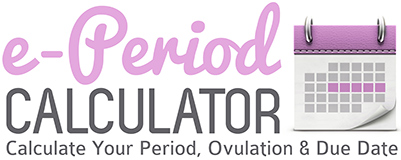Women have menstrual periods monthly, an occurrence in which the uterus or womb lining sheds and then passes through the cervix before going out through the vaginal canal. It is normal to feel some pain, discomfort and cramping during menstrual periods, but excessive pain is a condition called dysmenorrhoea. The following article has information on painful menstrual periods, including the causes and some pain relief tips.
Many women have painful menstrual periods or dysmenorrhoea, a condition that is caused by contractions of the uterus. The contractions are comparable to the ones that a woman would feel during labor, but they are not as intense. During the contractions, the blood vessels inside the muscle wall will be compressed and cause the blood supply to the womb to stop temporarily. This process discharges the chemicals that trigger pain. Aside from that, the prostaglandins are released from the body, which cause pain and contractions.
For some women, this pain might come as cramps inside the lower abdomen, back ache, and a sharp pain that is on and off, while others have intense pain that prevents them from performing daily chores. In addition, some experience headaches, nausea, diarrhera, dizziness, and tiredness. These symptoms might start at the beginning of periods or a few days before periods.
There are actually two types of dysmenorrhoea. The primary one in which pain occurs when periods start is not connected to any other reproductive organ problems. An increase in prostaglandin levels is the basic cause for this. The other is the secondary dysmenorrhoea where the pain comes later on and is usually connected to problems in the pelvic organs or the uterus.
Causes of Painful Menstrual Periods
Fibroids: These are non-cancerous tumors that grow inside the uterus and can lead to painful and heavy menstrual periods.
Ovarian cysts: Menstruation can be very painful when these are present.
Endometriosis: This happens when uterus lining cells start growing outside of the uterus.
Intrauterine device, or IUD: This is a type of contraception that is fitted in the uterus and can be very painful, especially in the first months after insertion.
Pelvic inflammatory disease: This condition can infect and inflame the ovaries, tubes, and uterus, which in turn leads to painful periods.
Other causes include anxiety, stress, and sexually transmitted diseases.
It is important to mention that certain women have a higher risk of experiencing painful menstrual periods. Some of the risk factors include smoking, heavy bleeding when menstruating, below the age of twenty, having a history of very painful periods in the family, irregular periods, early puberty, and never giving birth to a baby.
Another thing to know is that infection could cause sudden pelvic pain or cramping. If left untreated, the infection could scar the tissue and damage the pelvic organs, which could cause infertility. Be sure to consult your doctor if you notice infection symptoms such as severe pelvic pain, fever, foul smelling vaginal discharge, and sudden pain.
Tips to Get Relief from Painful Menstrual Periods
You can treat mild cases at home with remedies that can help give some relief and reduce the pain. Some of the treatments include:
- Massaging the lower abdomen region gently in a slight circular motion.
- Taking a warm bath to help relax your body and ease the menstrual pain.
- Exercising mildly to keep active.
- Meditation or yoga to help relax your mind and body.
- Applying a heat pad or hot water bottle to the lower abdomen, back or pelvic area.
- Eating light and nutritious meals.
- Lying down or lifting your legs with knees bent.
- Taking calcium, magnesium, vitamin B-6, omega-3 fatty acids, vitamin B-1, and vitamin E supplements, whilst limiting your intake of sugar, caffeine, alcohol, and salt from your diet to prevent bloating.
If you don’t get any result from these home treatments, you can opt for medical treatments. These treatments will depend on the underlying cause and severity of your cramps and pain. Your doctor might prescribe medication that will help ease the pain. Some of these include:
- Pain relievers
- NSAIDS, or non-steroidal anti-inflammatory drugs
- Antidepressants
- An anti-inflammatory drug such as ibuprofen that you would take several days prior to the date of your expected period
In addition, your doctor might recommend a hormonal birth control in the form of a patch, pill, vaginal ring, implant, or injection. The hormonal birth controls are designed to use hormones to stop ovulation and ultimately control menstrual cramps.
Another treatment option will be surgery if uterine fibroids or endometriosis is causing the pain and the other treatments are not giving the desired results. The surgery can be carried out to remove any cysts, uterine fibroids, or endometriosis.
A hysterectomy, which is a procedure to remove the uterus surgically, is recommended in rare cases. This option should only be considered if the pain is severe and other treatments are not successful.
Last but not least, you should consult your doctor right away if painful menstrual periods are preventing you from performing basic tasks monthly.



